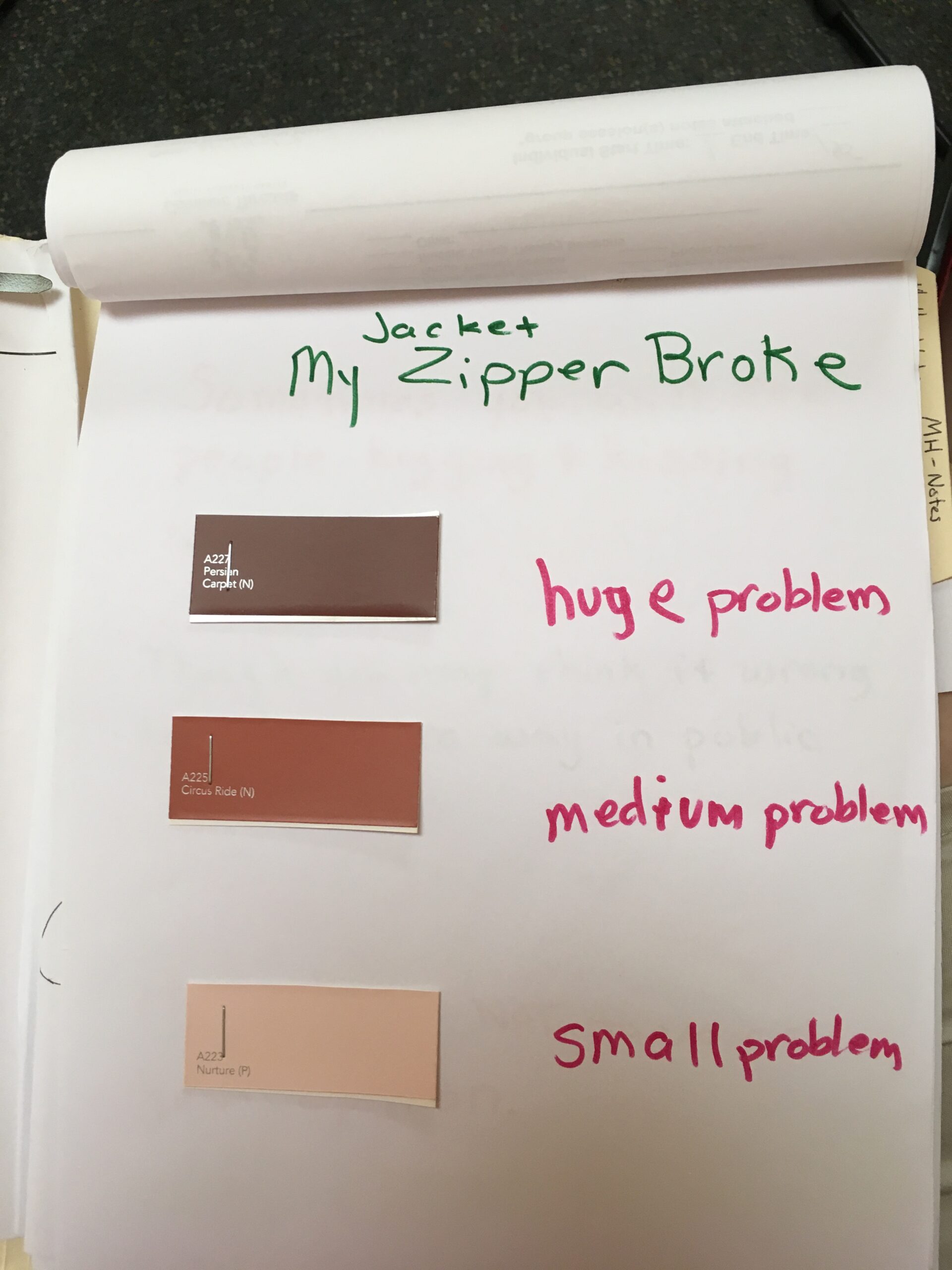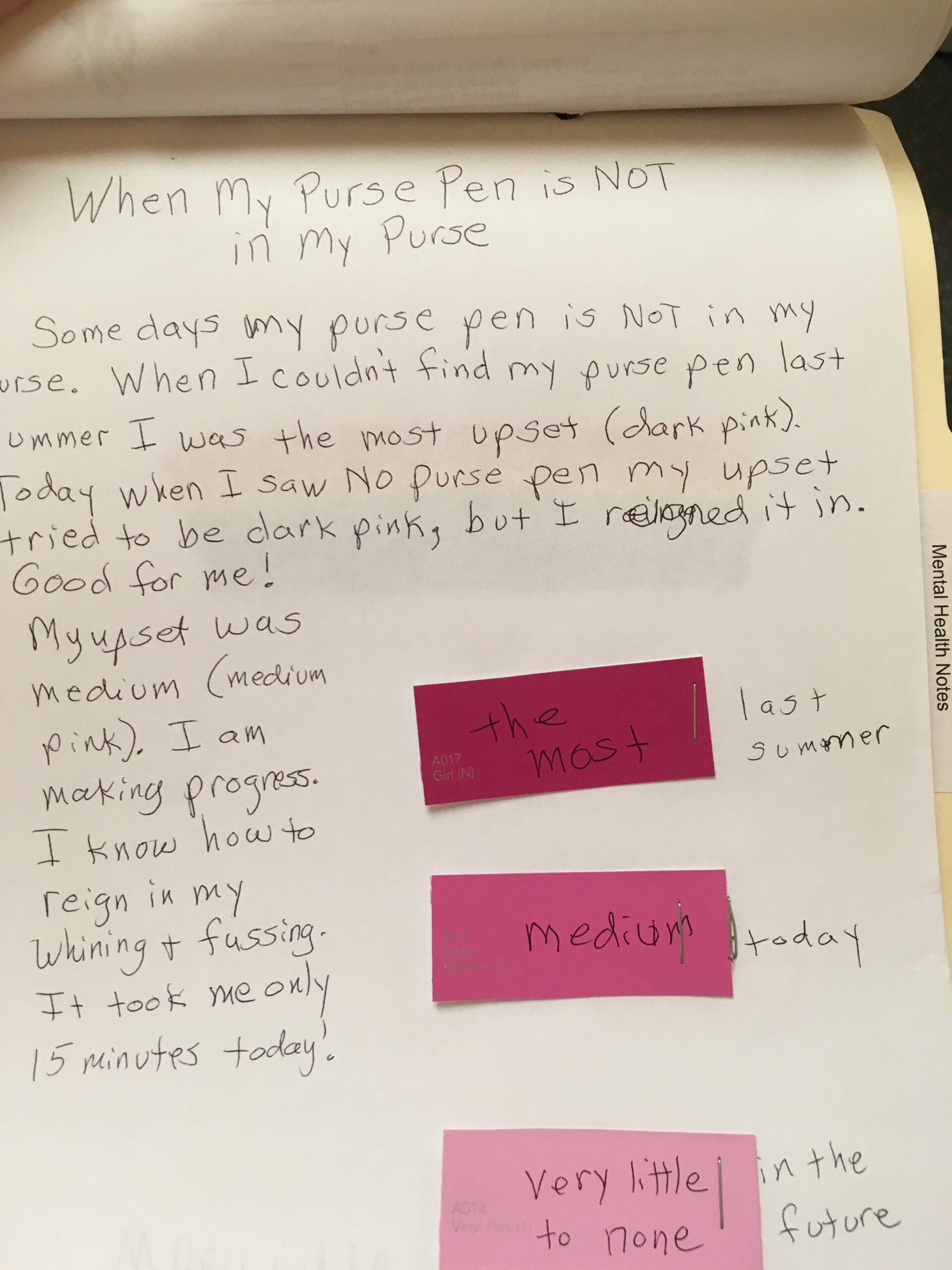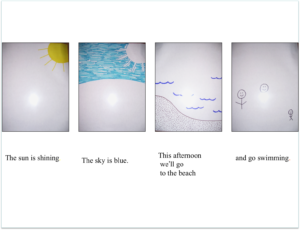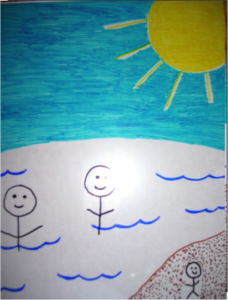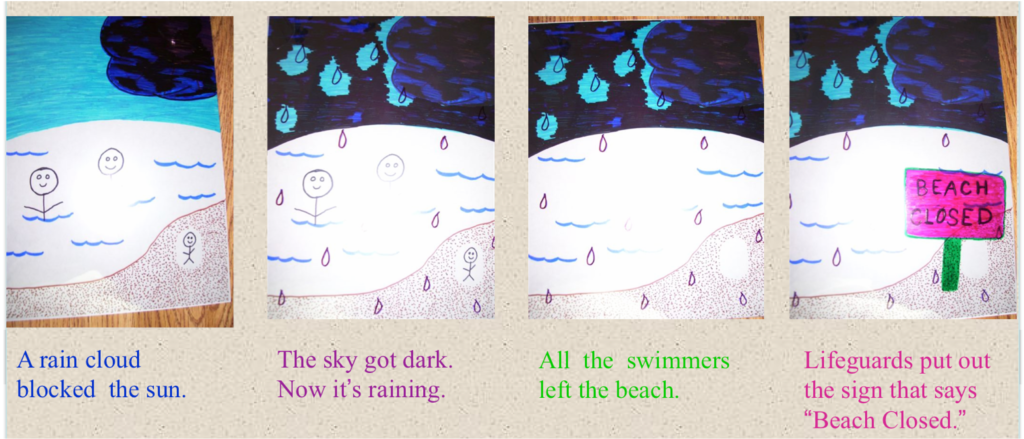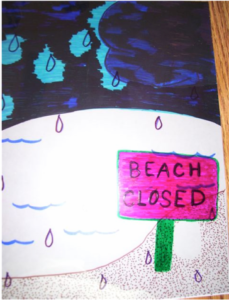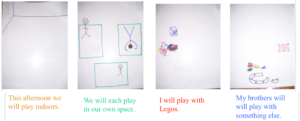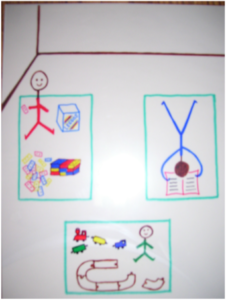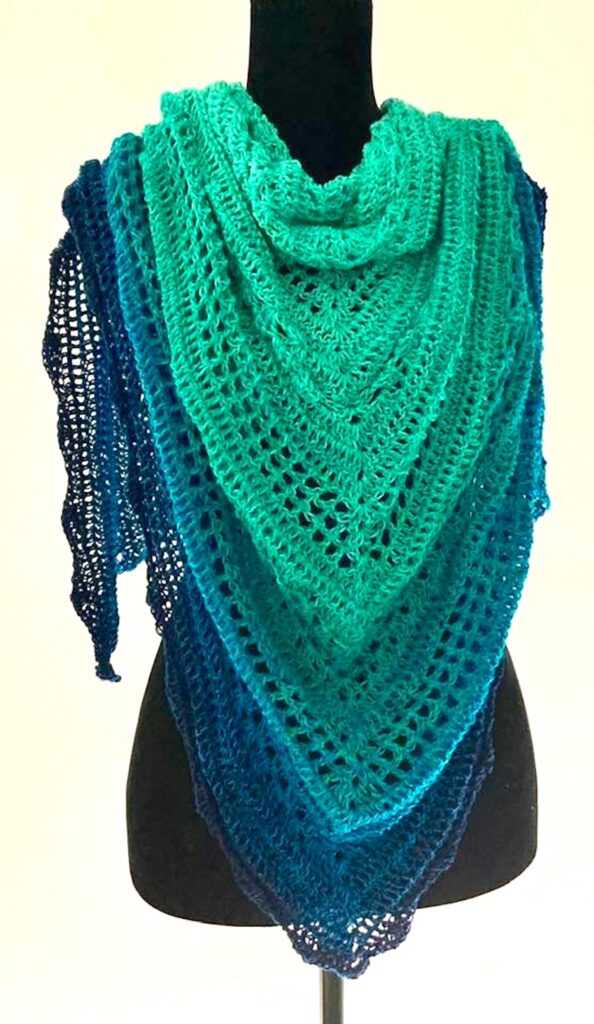This series of blogs and the release dates are as follows:
AUTISTIC SOLUTIONS RELATED TO TAKING IN INFORMATION
Part One: Using Words to Make Pictures (January 13, 2023)
Part Two: Using Words to Describe Pictures (February 10, 2023)
Part Three: When Feelings Are Too Big (March 10, 2023)
Part Four: Examples Using Paint Chip Visual Supports (April 7, 2023)
Part Five: Direct Instruction of Social Information (May 5, 2023)
This blog continues from the previous blog When Feelings Are Too Big and, as promised, includes several clinical examples of using paint chip visual supports.
I use paint chip samples from the hardware store – the book marker looking samples that show intensity of the paint color you are contemplating painting your walls. Clients choose the color they want to use and it is stapled to a piece of paper.
I usually divide the strip into sections of three by drawing lines and labeling the sections small, medium, large. We start by writing down examples of things since the last appointment that cause the client’s feelings to be small, medium and large. These answers are written into the corresponding place on the visual we are creating. Besides being a way for me to learn about the client’s week, it gives my client’s a structure for their appointment times along with teaching the system of small-medium-large and how to use it to define/plot feelings.
General example of showing the visual system of small/medium/large with paint chips:
The following are specific examples with a variety of autistic clients across the life span. Remember these are just a few examples. Also, for each photo, there is a context of a specific client situation it fit into, i.e. these photos of examples are not random, but apply to specific client contexts. All in all, there are limitless ways to use paint chips to show size of feelings. Sometimes extra words are written on the page and sometimes there is no narrative, depending on what is helpful to the particular client. The examples here were chosen so that there is enough narrative that the reader can understand the use of the paint chip visual.
These sorts of visuals allow for exploring ways to get more intense feelings to become less intense. Sometimes my client can tell me things they did that were helpful in causing an intense feeling to become less intense, but most of the time they need direct instruction. I accomplish this in a variety of ways, matched to the particular client.
Some additional examples include:
-
- For one client who used mindfulness, teaching and implementing three different mindfulness practices, keeping data on their effect on bringing big feelings down was helpful.
- Teaching and practicing sensory strategies. These strategies can then be implemented both on a regular basis (proactively) so as to keep the sensory sytem more regulated and in response to (reactive) experiencing a big feeling (Mahler, 2016, 2019).
-
Using The Interoception Curriculum: A Step-by-Step Guide to Developing Mindful Self-Regulation (Mahler, 2019) has been significant for a number of clients in supporting the body-emotion connection.
-
Expand the small, medium, large feelings to a 5-Point Scale (Dunn-Burron, 2012).
-
Use the activity A 5 Could Make Me Lose Control (Dunn Buron, 2007). This activity has several cards depicting a variety of situations. The client places the card in one of the pockets numbered 1-5 that replicate the numbered order of the 5-Point Scale. For example, if making a phone call is mildly anxiety provoking a client might put that card in the pocket labeled 1 or 2 and if it causes the most anxiety ever it would be placed in the pocket labeled 5. This activity provides information that allows a client to then be supported in thinking through what to do the next time the item on the card occurs – in this case, making a phone call.
-
Teach Kerry Mataya’s visual problem-solving method (Mataya & Owens, 2012). This consists of a visual depicting the choices in ways to solve a problem along with protocol to teach and practice the problem-solving choices. Once the skills are learned the client can use the Problem-Solving visual each time feelings get big and keep data showing the number of the feeling on the 5-Point Scale when escalated, which problem-solving strategy was utilized and what number the feeling was on the 5-Point Scale after implementing the problem solving strategy.
The take away point here is that we can teach our clients to successfully manage their big feelings without needing to teach the labeling of these big feelings! Often I invent helpful solutions during client sessions that apply to that one individual.
Selection from: Autistically Thriving: Reading Comprehension,
ConversationalEngagement, and Living a Self-Determined Life
Based on Autistic Neurology, pg. 142-144.
(The next and last blog in this series, Direct Instruction of Social Information, will give yet another clinical example.)
Note: The author is a mental health therapist and is also autistic. She intentionally uses identity-first language (rather than person-first language), and invites the reader, if interested, to do further research on the preference of most autistic adults to refer to themselves using identity-first language.
If you are a clinician and interested in learning more about therapy with the autistic client please join me along with two of my colleagues in an online course.
CLICK HERE for additional information about Mental Health Therapy with the Autistic Client.
BY JUDY ENDOW
Endow, J. (2021). Executive Function Assessment. McFarland, WI: Judy Endow.
Endow, J. (2019). Autistically Thriving: Reading Comprehension, Conversational Engagement, and Living a Self-Determined Life Based on Autistic Neurology. Lancaster, PA: Judy Endow.
Endow, J. (2012). Learning the Hidden Curriculum: The Odyssey of One Autistic Adult. Shawnee Mission, KS: AAPC Publishing.
Endow, J. (2006). Making Lemonade: Hints for Autism’s Helpers. Cambridge, WI: CBR Press.
Endow, J. (2013). Painted Words: Aspects of Autism Translated. Cambridge, WI: CBR Press.
Endow, J. (2009b). Paper Words: Discovering and Living With My Autism. Shawnee Mission, KS: AAPC Publishing.
Endow, J. (2009a). Outsmarting Explosive Behavior: A Visual System of Support and Intervention for Individuals With Autism Spectrum Disorders. Shawnee Mission, KS: AAPC Publishing.
Endow, J. (2010). Practical Solutions for Stabilizing Students With Classic Autism to Be Ready to Learn: Getting to Go. Shawnee Mission, KS: AAPC Publishing.
Myles, B. S., Endow, J., & Mayfield, M. (2013). The Hidden Curriculum of Getting and Keeping a Job: Navigating the Social Landscape of Employment. Shawnee Mission, KS: AAPC Publishing.
REFERENCES
Dunn Buron, K. (2007). A 5 Could Make Me Lose Control! An activity-based method for evaluating and supporting highly anxious students. Shawnee Mission, KS: AAPC Publishing.
Mahler, K. (2019). The Interoception Curriculum: A step-by-step guide to developing mindful self-regulation. Lancaster, PA: Kelly Mahler.
Mahler, K. (2016). Interoception the Eighth Sensory System: Practical solutions for improving self-regulation, self-awareness and social understanding of individuals with autism spectrum and related disorders. Shawnee Mission, KS: AAPC Publishing.
Mataya, K. & Owens, P. (2010). Successful Problem-Solving for High-Functioning Students With Autism Spectrum Disorders. Shawnee Mission, KS: AAPC Publishing.

